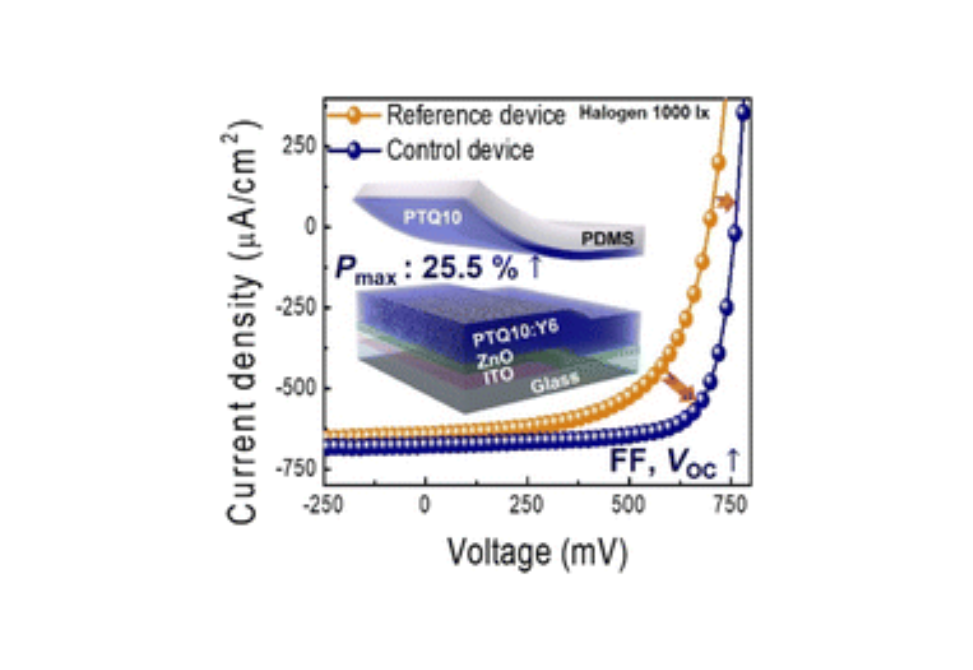Drastic performance improvement of indoor organic photovoltaics using a novel laminated homojunction hole-transport layer
Abstract
Recently, the application of internet of things devices to semipermanent indoor power systems has garnered significant attention. In this context, organic photovoltaics (OPVs) with unique optoelectronic properties under dim illumination conditions are believed to be particularly suitable for application in indoor energy-harvesting systems. In this paper, an additional PTQ10 homojunction hole transport layer (HTL) is introduced into PTQ10:Y6 OPVs via a simple and effective transfer lamination method. The introduction of the HTL suppresses defect densities drastically and maximizes quasi-Fermi level splitting, leading to a dramatic improvement in indoor performance with the power-conversion efficiency (PCE) increasing by more than 25%. Optimized indoor OPVs equipped with the proposed HTL exhibit an improvement in PCE by 26.5% under a 1000 lx LED and an output power density of 413 μW cm−2 under 1000 lx halogen conditions, both of which are the highest recorded values. This demonstrates the practical viability of operating low-power indoor electron devices using the proposed architecture.
Citation
Kim, T. H., Neu, J. S., Kim, S. H., Saeed, M. A., You, W., & Shim, J. W. (2022). Drastic performance improvement of indoor organic photovoltaics using a novel laminated homojunction hole-transport layer. Journal of Materials Chemistry A, 10(39), 20819–20826. https://doi.org/10.1039/d2ta04022k


